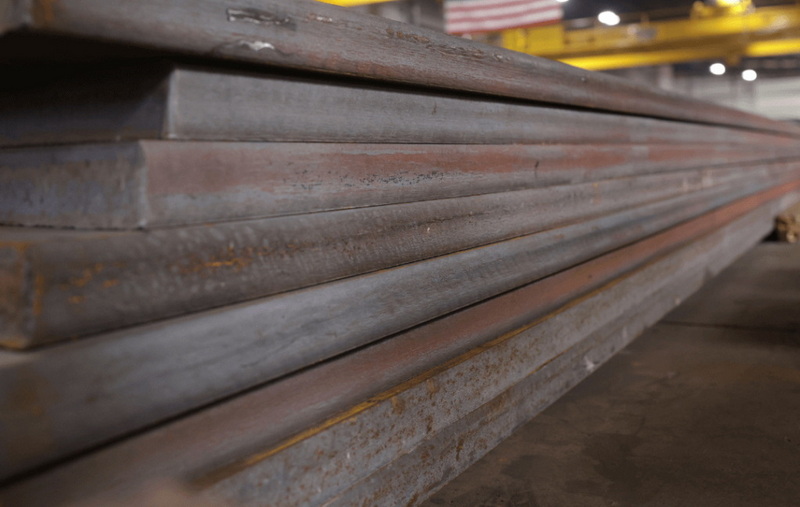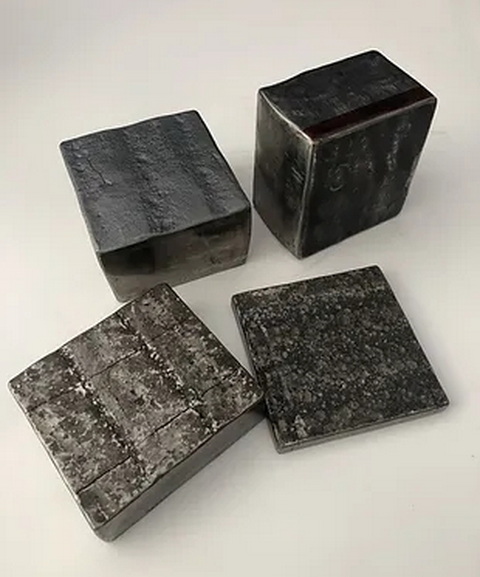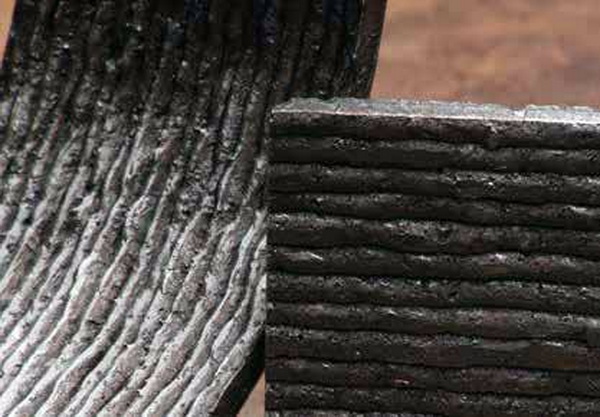Content Menu
● Understanding Wear-Resistant Materials
>> Types of Wear-Resistant Materials
● Advantages of Chromium Carbide Plates
>> 1. High Hardness
>> 2. Excellent Wear Resistance
>> 3. Versatility
>> 4. Cost-Effectiveness
>> 5. Resistance to Impact
● Applications of Chromium Carbide Plates
>> 1. Mining
>> 2. Construction
>> 3. Material Handling
>> 4. Steel Production
>> 5. Agriculture
● Comparing Chromium Carbide Plates to Other Wear-Resistant Materials
>> Hardness and Wear Resistance
>> Cost Considerations
>> Application Suitability
>> Installation and Maintenance
● The Future of Wear-Resistant Materials
>> Emerging Technologies
>> Sustainability Considerations
● Conclusion
● Frequently Asked Questions
>> 1. What are chromium carbide plates made of?
>> 2. How do I install chromium carbide plates?
>> 3. What industries use chromium carbide plates?
>> 4. How do chromium carbide plates compare to Hardox steel?
>> 5. What maintenance is required for chromium carbide plates?
In the world of industrial applications, wear-resistant materials play a crucial role in extending the lifespan of equipment and reducing maintenance costs. Among these materials, chromium carbide plates have gained significant attention due to their exceptional hardness and resistance to wear. This article explores how chromium carbide plates compare to other wear-resistant materials, their applications, benefits, and considerations for use.

Understanding Wear-Resistant Materials
Wear-resistant materials are designed to withstand the abrasive forces that occur in various industrial environments. These materials are essential in industries such as mining, construction, and manufacturing, where equipment is subjected to harsh conditions. The primary goal of using wear-resistant materials is to minimize wear and tear, thereby enhancing the durability and efficiency of machinery.
Types of Wear-Resistant Materials
1. Chromium Carbide Plates: Known for their high hardness and excellent wear resistance, chromium carbide plates are often used in applications where abrasion is a significant concern. They are typically produced through a process of welding chromium carbide onto a steel substrate, creating a composite material that combines the toughness of steel with the hardness of carbide.
2. Hardox Steel: Hardox is a brand of wear plate made from high-strength steel. It is known for its toughness and ability to withstand impact and abrasion. Hardox plates are often used in applications such as dump trucks, excavators, and other heavy machinery.
3. Ceramic Materials: Ceramic wear-resistant materials are often used in applications where extreme hardness is required. They are typically more brittle than metal-based materials, making them suitable for specific applications where impact resistance is not a primary concern.
4. Polyurethane: Polyurethane is a flexible and durable material that can absorb impact and resist abrasion. It is often used in applications where noise reduction and cushioning are essential, such as in conveyor systems.
5. Steel Alloys: Various steel alloys are engineered to enhance wear resistance. These alloys often contain elements such as manganese, nickel, and molybdenum, which improve hardness and toughness.
Advantages of Chromium Carbide Plates
Chromium carbide plates offer several advantages over other wear-resistant materials:
1. High Hardness
Chromium carbide plates are known for their exceptional hardness, typically ranging from 58 to 65 HRC (Rockwell Hardness Scale). This high hardness level allows them to withstand severe abrasion and extend the lifespan of equipment.
2. Excellent Wear Resistance
The unique composition of chromium carbide provides outstanding wear resistance, making these plates ideal for applications involving high levels of friction and abrasion. They are commonly used in mining, construction, and material handling industries.
3. Versatility
Chromium carbide plates can be used in various applications, including chutes, hoppers, and conveyor systems. Their ability to be welded onto different substrates allows for customization based on specific operational needs.
4. Cost-Effectiveness
While the initial investment in chromium carbide plates may be higher than other materials, their durability and reduced maintenance costs often result in long-term savings. The extended lifespan of equipment leads to fewer replacements and repairs.
5. Resistance to Impact
In addition to wear resistance, chromium carbide plates also exhibit good resistance to impact. This makes them suitable for applications where both abrasion and impact are present.
Applications of Chromium Carbide Plates
Chromium carbide plates are utilized in various industries due to their unique properties. Some common applications include:
1. Mining
In the mining industry, chromium carbide plates are used to protect equipment from the harsh conditions of ore extraction and processing. They are often applied to chutes, hoppers, and other components that experience high wear.
2. Construction
Construction equipment, such as bulldozers and excavators, often faces abrasive materials. Chromium carbide plates are used to enhance the durability of these machines, ensuring they can operate efficiently in challenging environments.
3. Material Handling
In material handling applications, chromium carbide plates are used to protect conveyor systems and other equipment from wear caused by the movement of bulk materials.
4. Steel Production
In steel production, chromium carbide plates are used in areas where molten metal can cause wear and damage to equipment. Their heat resistance and durability make them suitable for this application.
5. Agriculture
Agricultural equipment, such as plows and harrows, can benefit from the wear resistance of chromium carbide plates, ensuring they remain effective in tough soil conditions.

Comparing Chromium Carbide Plates to Other Wear-Resistant Materials
When comparing chromium carbide plates to other wear-resistant materials, several factors come into play:
Hardness and Wear Resistance
Chromium carbide plates generally outperform many other materials in terms of hardness and wear resistance. While Hardox steel is known for its toughness, it may not provide the same level of wear resistance as chromium carbide in high-abrasion environments. The hardness of chromium carbide allows it to maintain its integrity even under extreme conditions, making it a preferred choice for industries that require reliable performance.
Cost Considerations
While chromium carbide plates may have a higher upfront cost, their longevity and reduced maintenance needs can lead to lower overall costs in the long run. In contrast, materials like polyurethane may be less expensive initially but may require more frequent replacements. This cost-effectiveness is particularly important for businesses looking to optimize their operational budgets.
Application Suitability
The choice of wear-resistant material often depends on the specific application. For instance, ceramic materials may be ideal for applications requiring extreme hardness but may not withstand impact as well as chromium carbide plates. Conversely, polyurethane may be better suited for applications where flexibility and noise reduction are essential. Understanding the specific requirements of each application is crucial for selecting the most appropriate material.
Installation and Maintenance
Chromium carbide plates can be welded onto existing equipment, making installation relatively straightforward. However, proper maintenance is crucial to ensure their effectiveness. Regular inspections and timely replacements of worn components are necessary to maintain optimal performance. This proactive approach can prevent costly downtime and extend the lifespan of the equipment.
The Future of Wear-Resistant Materials
As industries continue to evolve, the demand for advanced wear-resistant materials is expected to grow. Innovations in material science are leading to the development of new composites and coatings that enhance wear resistance, reduce weight, and improve overall performance. Chromium carbide plates are likely to remain a key player in this field, but ongoing research may yield even more effective solutions.
Emerging Technologies
Recent advancements in technology have led to the exploration of new materials and methods for enhancing wear resistance. For example, the use of nanotechnology in coatings can improve the hardness and durability of wear-resistant materials. Additionally, additive manufacturing techniques are being investigated for producing complex geometries that optimize performance in specific applications.
Sustainability Considerations
As industries become more environmentally conscious, the sustainability of materials is gaining importance. The production and disposal of wear-resistant materials can have significant environmental impacts. Future developments may focus on creating more sustainable options that reduce waste and energy consumption while maintaining high performance.
Conclusion
In conclusion, chromium carbide plates are a superior choice for wear resistance in various industrial applications. Their high hardness, excellent wear resistance, and versatility make them an ideal solution for industries facing abrasive conditions. While they may come with a higher initial cost, the long-term benefits often outweigh the investment. When selecting wear-resistant materials, it is essential to consider the specific application requirements and the unique properties of each material.

Frequently Asked Questions
1. What are chromium carbide plates made of?
Chromium carbide plates are made by welding chromium carbide onto a steel substrate, creating a composite material that combines the hardness of carbide with the toughness of steel.
2. How do I install chromium carbide plates?
Chromium carbide plates can be welded onto existing equipment. It is essential to follow proper welding procedures to ensure a strong bond and optimal performance.
3. What industries use chromium carbide plates?
Chromium carbide plates are commonly used in mining, construction, material handling, steel production, and agriculture.
4. How do chromium carbide plates compare to Hardox steel?
While both materials offer wear resistance, chromium carbide plates typically provide higher hardness and wear resistance, making them more suitable for high-abrasion applications.
5. What maintenance is required for chromium carbide plates?
Regular inspections are necessary to identify any wear or damage. Timely replacements of worn components will help maintain the effectiveness of the plates.
















